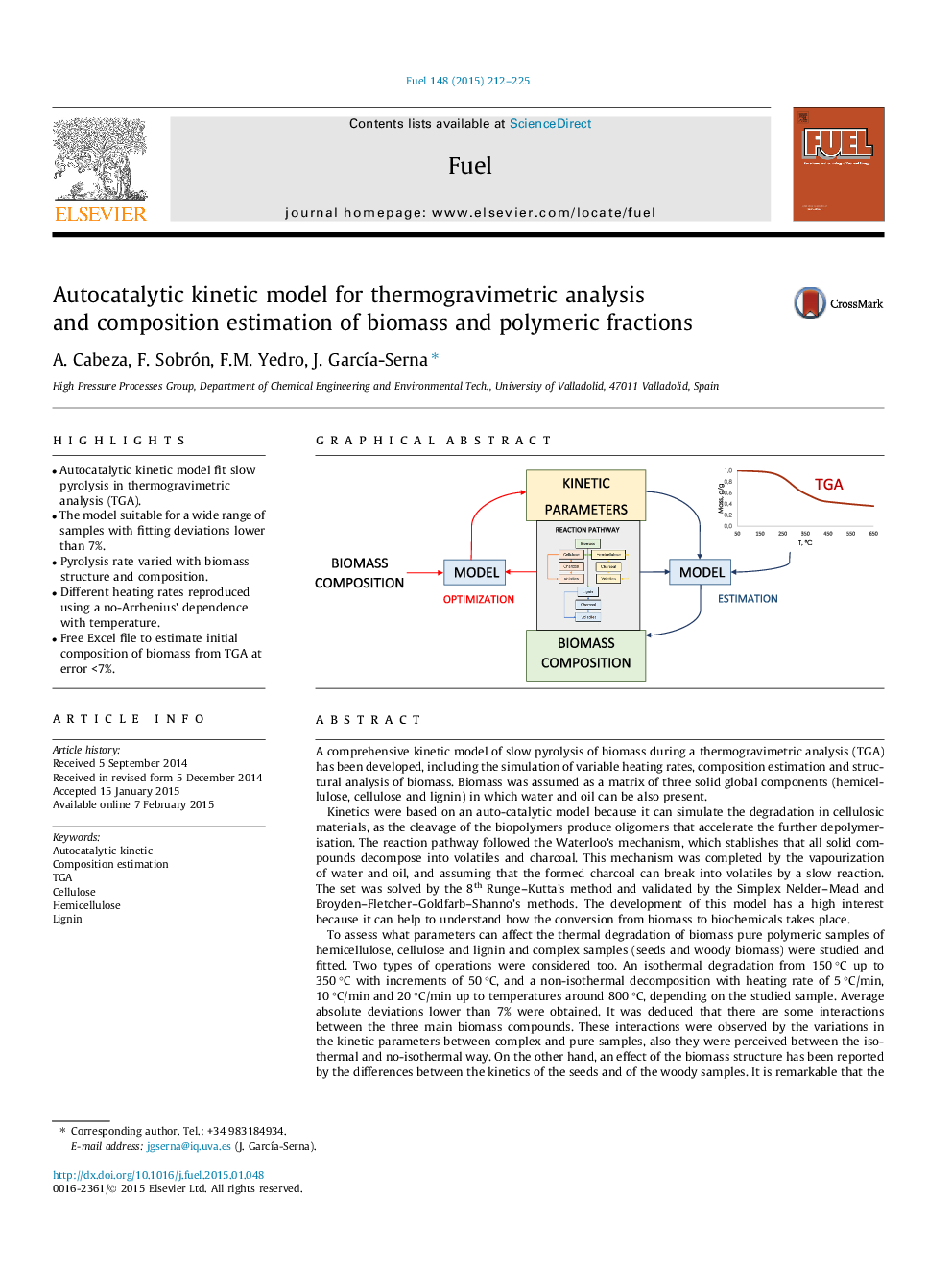| کد مقاله | کد نشریه | سال انتشار | مقاله انگلیسی | نسخه تمام متن |
|---|---|---|---|---|
| 205929 | 461128 | 2015 | 14 صفحه PDF | دانلود رایگان |
• Autocatalytic kinetic model fit slow pyrolysis in thermogravimetric analysis (TGA).
• The model suitable for a wide range of samples with fitting deviations lower than 7%.
• Pyrolysis rate varied with biomass structure and composition.
• Different heating rates reproduced using a no-Arrhenius’ dependence with temperature.
• Free Excel file to estimate initial composition of biomass from TGA at error <7%.
A comprehensive kinetic model of slow pyrolysis of biomass during a thermogravimetric analysis (TGA) has been developed, including the simulation of variable heating rates, composition estimation and structural analysis of biomass. Biomass was assumed as a matrix of three solid global components (hemicellulose, cellulose and lignin) in which water and oil can be also present.Kinetics were based on an auto-catalytic model because it can simulate the degradation in cellulosic materials, as the cleavage of the biopolymers produce oligomers that accelerate the further depolymerisation. The reaction pathway followed the Waterloo’s mechanism, which stablishes that all solid compounds decompose into volatiles and charcoal. This mechanism was completed by the vapourization of water and oil, and assuming that the formed charcoal can break into volatiles by a slow reaction. The set was solved by the 8th Runge–Kutta’s method and validated by the Simplex Nelder–Mead and Broyden–Fletcher–Goldfarb–Shanno’s methods. The development of this model has a high interest because it can help to understand how the conversion from biomass to biochemicals takes place.To assess what parameters can affect the thermal degradation of biomass pure polymeric samples of hemicellulose, cellulose and lignin and complex samples (seeds and woody biomass) were studied and fitted. Two types of operations were considered too. An isothermal degradation from 150 °C up to 350 °C with increments of 50 °C, and a non-isothermal decomposition with heating rate of 5 °C/min, 10 °C/min and 20 °C/min up to temperatures around 800 °C, depending on the studied sample. Average absolute deviations lower than 7% were obtained. It was deduced that there are some interactions between the three main biomass compounds. These interactions were observed by the variations in the kinetic parameters between complex and pure samples, also they were perceived between the isothermal and no-isothermal way. On the other hand, an effect of the biomass structure has been reported by the differences between the kinetics of the seeds and of the woody samples. It is remarkable that the developed model could reproduce the cellulose decomposition with a variable heating rate using a unique set of kinetic parameters. This was possible by a no-Arrhenius’ dependence with temperature. In the same way, it was used to predict the initial composition of the studied biomass with deviations lower than 7% for lignin and cellulose.
Figure optionsDownload as PowerPoint slide
Journal: Fuel - Volume 148, 15 May 2015, Pages 212–225
